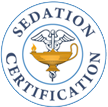Utah Board of Nursing Review – May 9, 2017
Reviewed by Sedation Certification – December 28, 2023
State sedation policy – Yes
Can RN’s give anesthetics for sedation? – No
Can RN’s give anesthetics for intubated/ventilated patients? – Yes
http://le.utah.gov/~2017/bills/hbillint/HB0142.htm
Click to view the policy. We can not properly place it on our website and still maintain all the links and information.
